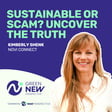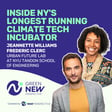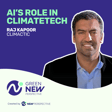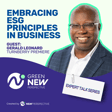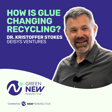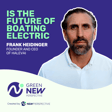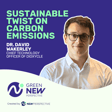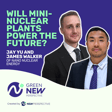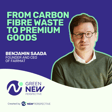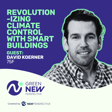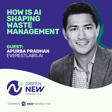
TELO E-Truck: Redefining Design Norms For Urban EVs
Meet Forrest North, TELO's CTO, and Jason Marks, the CEO, the inventive minds revolutionizing the electric pickup landscape. Their company, TELO, is all about defying the norm, especially when it comes to size.
They're introducing the MT1, a compact electric pickup that challenges the enormity of traditional trucks. The MT1 has a game-changing design, skipping the engine bay for a compact cab-over structure. Incredibly, it fits a four-door cabin and a five-foot truck bed into a Mini hardtop's length, making even the Ford Maverick look oversized.
What's fascinating is that this compact wonder seats five comfortably. But that's not all—TELO offers an add-on that expands the seating capacity to eight. It's a whole new level of thinking when it comes to electric pickups.
In this podcast episode, we're about to uncover the exciting story behind this innovation with Forrest and Jason.
🕑 KEY MOMENTS
==================
➜ [01:14] Introducting TELO
➜ [04:17] Truck Size Evolution
➜ [07:11] Electrification Trend and TELO's Stand
➜ [10:11] TELO's Sustainability Impact
➜ [16:02] Marketing TELO Effectively
➜ [17:12] TELO's Design Philosophy
➜ [23:04] Making TELO Accessible
➜ [26:00] EV Market Trends and TELO's Role
➜ [34:03] Emerging EV Trends and TELO's Adaptation
📚 RESOURCES & LINKS
========================
- Website: https://telotrucks.com/
- LinkedIn: https://www.linkedin.com/company/telo...
- Instagram: https://www.instagram.com/telotrucks/
- Discord: https://discord.com/invite/MQJ8CpKRJn
👉 Interview with Forrest North & Jason Marks: https://www.npws.net/podcast/urban-ev-trucks
🌍 SUSTAINABILITY PODCAST CREATED BY NEW PERSPECTIVE
========================
This podcast is proudly sponsored by New Perspective Marketing, a dynamic growth marketing agency in Boston, MA, celebrating 20 years in business. We help sustainably focused B2B organizations grow their brands and scale up revenue. If you or your organization is looking to grow, visit npws.com for more info.
🎧 SUBSCRIBE TO OUR PODCAST
===========================
- Spotify: https://bit.ly/3PSWIyI
- Apple Podcasts: https://bit.ly/3RvlHte
- Youtube: https://bit.ly/3RDzkXg
- Deezer: https://bit.ly/3PvQaof
- Amazon Music: https://bit.ly/3PQlijS
- Zencastr: https://bit.ly/48xt75s
💬 FOLLOW US ON SOCIAL MEDIA
============================
- Instagram: https://www.instagram.com/greennewperspective/
- Twitter: https://twitter.com/gnperspective
- Facebook: https://www.facebook.com/greennewperspective
- LinkedIn: https://www.linkedin.com/showcase/greennewperspective/
- TikTok: https://www.tiktok.com/@greennewperspective
#electrictruck #electricvehicle #cleanenergy #evs #electriccar
